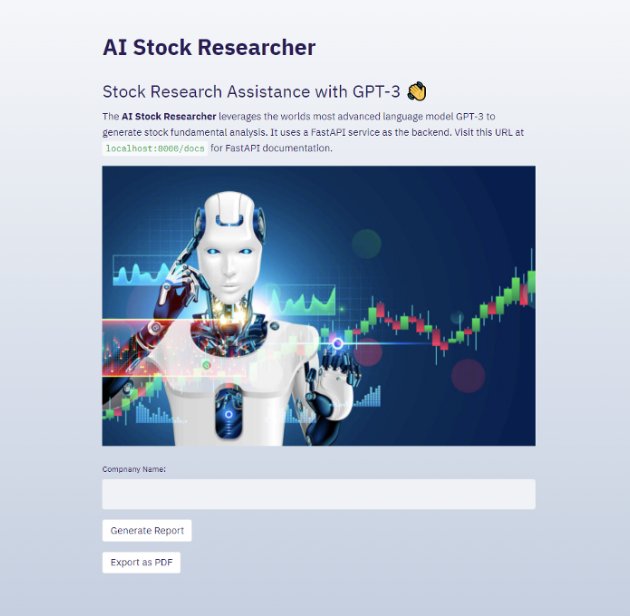20 Free Suggestions For Picking AI Stock Analysing Sites
20 Free Suggestions For Picking AI Stock Analysing Sites
Blog Article
Top 10 Tips For Assessing Ai And Machine Learning Models Used By Ai Trading Platforms To Predict And Analyze Stocks
The AI and machine (ML) model utilized by stock trading platforms as well as prediction platforms should be evaluated to make sure that the information they provide are precise, reliable, relevant, and useful. Models that are poorly designed or overhyped can lead to flawed predictions and financial losses. These are the top ten guidelines for evaluating the AI/ML models of these platforms:
1. Find out the intent and method of this model
Clarified objective: Determine the model's purpose whether it's to trade on short notice, putting money into the long term, analyzing sentiment, or a way to manage risk.
Algorithm transparency: Check if the platform provides information on the kinds of algorithms employed (e.g. regression and neural networks, decision trees or reinforcement learning).
Customizability - Determine whether you can modify the model to suit your strategy for trading and your risk tolerance.
2. Review the Model Performance Metrics
Accuracy: Test the model's accuracy in the prediction of the future. But, don't just depend on this measurement because it could be misleading when used with financial markets.
Precision and recall (or accuracy) Find out the extent to which your model can distinguish between true positives - e.g. precisely predicted price movements - as well as false positives.
Risk-adjusted results: Evaluate if model predictions lead to profitable trading after the accounting risks (e.g. Sharpe, Sortino and others.).
3. Make sure you test the model using Backtesting
Backtesting the model by using historical data allows you to compare its performance with previous market conditions.
Tests using data that was not previously used for training: To avoid overfitting, test your model with data that has not been previously used.
Analyzing scenarios: Evaluate the model's performance under various market conditions (e.g., bear markets, bull markets high volatility).
4. Be sure to check for any overfitting
Overfitting: Look for models that work well with training data but don't perform as well with unseen data.
Regularization methods: Ensure that the platform doesn't overfit by using regularization like L1/L2 and dropout.
Cross-validation (cross-validation) Check that your platform uses cross-validation for assessing the model's generalizability.
5. Review Feature Engineering
Look for features that are relevant.
Select features that you like: Choose only those features that are statistically significant. Avoid redundant or irrelevant data.
Dynamic feature updates: Check whether the model is able to adapt to changing market conditions or new features over time.
6. Evaluate Model Explainability
Interpretability (clarity) It is important to verify that the model is able to explain its assumptions clearly (e.g. value of SHAP or the importance of features).
Black-box models cannot be explained Beware of systems that use complex models including deep neural networks.
User-friendly insights: Make sure the platform gives actionable insights that are presented in a manner that traders are able to comprehend.
7. Examine Model Adaptability
Market shifts: Determine whether the model is able to adapt to market conditions that change (e.g., new regulations, economic shifts, or black swan occasions).
Continuous learning: Check if the platform updates the model regularly with new data to improve the performance.
Feedback loops. Make sure you include user feedback or actual outcomes into the model to improve.
8. Examine for Bias and Fairness
Data bias: Ensure whether the information in the training program is representative and not biased (e.g., a bias towards specific sectors or periods of time).
Model bias: Make sure the platform is actively monitoring biases in models and minimizes them.
Fairness - Check that the model you choose to use isn't biased in favor of or against particular sector or stocks.
9. Examine Computational Efficiency
Speed: Check whether a model is able to make predictions in real-time and with a minimum latency.
Scalability - Verify that the platform can handle massive datasets, multiple users and not degrade performance.
Resource usage: Check if the model is optimized for the use of computational resources effectively (e.g. the GPU/TPU utilization).
Review Transparency and Accountability
Model documentation: Ensure that the platform has a detailed description of the model's architecture, training process, and limitations.
Third-party Audits: Verify that the model has independently been audited or validated by third parties.
Error handling: Check that the platform has mechanisms to detect and fix models that have failed or are flawed.
Bonus Tips
User reviews Conduct user research and research case studies to assess the model's performance in actual life.
Trial period: You may try a demo, trial or a free trial to test the model's predictions and usability.
Support for customers - Ensure that the platform is able to offer a solid support service to help you resolve technical or model related issues.
With these suggestions by following these tips, you will be able to evaluate the AI and ML models used by stock prediction platforms, ensuring they are reliable, transparent, and aligned with your trading goals. Take a look at the recommended investment ai examples for blog examples including ai for trading, investing in ai stocks, chart ai for trading, stock predictor, best ai stock, ai investing, ai stock trading app, best stock analysis website, stock predictor, ai trading software and more.
Top 10 Tips For Evaluating The Community And Social Features In Ai Stock Predicting/Analyzing Platforms
To understand how users learn, interact, and share knowledge in a community, it's important to evaluate the community- and social-features of AI trade and stock prediction platforms. These features are a fantastic method to improve users' experience and provide valuable support. These are 10 top tips to evaluate the community and social aspects of such platforms:
1. Active User Community
Tips - Make sure the platform is backed by a base of users active in engaging in regular discussions, sharing their insights and feedback.
Why: A lively community is a place where members can develop and share knowledge.
2. Discussion Forums, Boards, and Discussion Forums
Check the activity and quality of message boards and discussion forums.
Forums allow members to talk about market trends or ask questions, and also discuss strategies.
3. Social Media Integration
Tips Check if your platform integrates with other social media platforms like Twitter and LinkedIn to allow sharing of information and updates.
The reason: Integration of social media can enhance engagement and provide real-time market updates.
4. User-Generated Content
Tip: Look for features that allow users to create and share content, for example, articles, blogs or trading strategies.
The reason: User-generated content promotes a collaborative environment and provides many perspectives.
5. Expert Contributions
Tips - Make sure the platform is populated with contributions from experts in the industry, such as market analysts and AI specialists.
The reason: Expert insights add authenticity and depth to community discussions.
6. Real-Time Messaging, Chat and Chat in Real Time
Tips: Ensure that you can instantly communicate between users by evaluating the real-time chat and messaging options.
Why is this? Real-time interaction facilitates quick information exchange and collaboration work.
7. Community Modulation and Support
Tip Assess the level or moderating and customer support within the community.
The reason: Moderation is essential for maintaining a positive, peaceful and respectful atmosphere. Support is available to help users resolve their problems as fast as is possible.
8. Webinars and Events
Tips: Check if your platform hosts Q&A sessions, live sessions or webinars.
Why? These events are an excellent opportunity to gain knowledge about the industry and have direct interaction with experts.
9. User Reviews and Feedback
Find options that give users the ability to provide feedback and comments on the platform as well as its community features.
The reason: User feedback helps to identify strengths and areas to improve.
10. Gamification and Rewards
Tips: Determine if the platform incorporates games elements (e.g. leaderboards, badges) or incentives for participation.
The reason is that games can inspire users to engage more deeply with the community and its platform.
Tips for Privacy and Security
To protect the data of users as well as their activities, ensure that community and social features are protected by robust security and privacy measures.
When you thoroughly examine these elements, you can determine whether you think the AI software for stock predictions and trading offers an active and friendly community that enhances the experience of trading and your understanding. Follow the top rated the full report on ai day trading for more tips including best ai stocks to buy now, trading with ai, ai day trading, incite, best copyright prediction site, ai for stock trading, ai trading tools, best ai copyright to buy, ai copyright trading bot, trading ai bot and more.